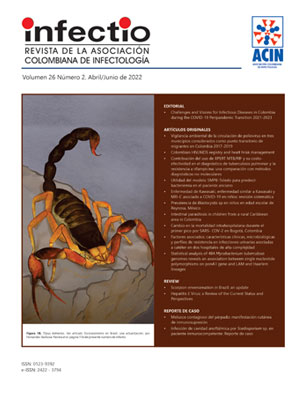Colombian HIV/AIDS registry and health risk management
Contenido principal del artículo
Resumen
HIV/AIDS information systems are a critical tool for keeping track of the HIV pandemic in any country, leading to the AIDS elimination to 2030 and achievement of the 95-95-95 goals set by 2025. In this article, we describe the data management process of the Colombian National HIV/AIDS registry, its epidemiological results and contributions to research and health risk management. This registry is a longitudinal database. Variables and periodicity are defined by The Ministry of Health and Social Protection. Reporting is done by health insurers and their healthcare providers on annual bases. The information is uploaded through a web platform run by the High-Cost Diseases Fund, in charge of the validation, auditing process, consolidation, analysis and publication of the data. Security and confidentiality of the information is also taken care of by the High-Cost Disease Fund. Main results include epidemiological follow up of the epidemic, periodic evaluation of 25 risk management indicators, publication of research studies and the calculation of an economic incentive for insurers to improve health risk management. The registry has shown to be useful not only for the management of clinical information but also for administrative purposes.

